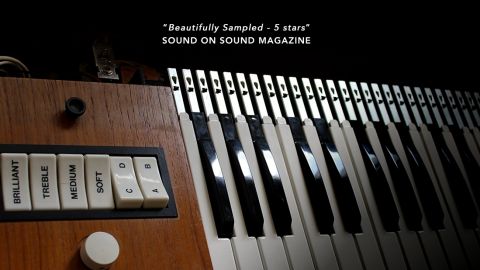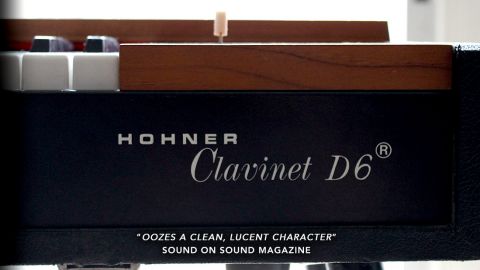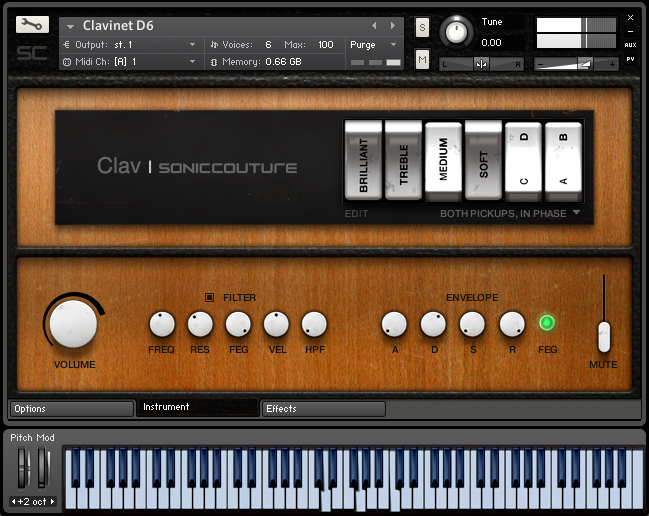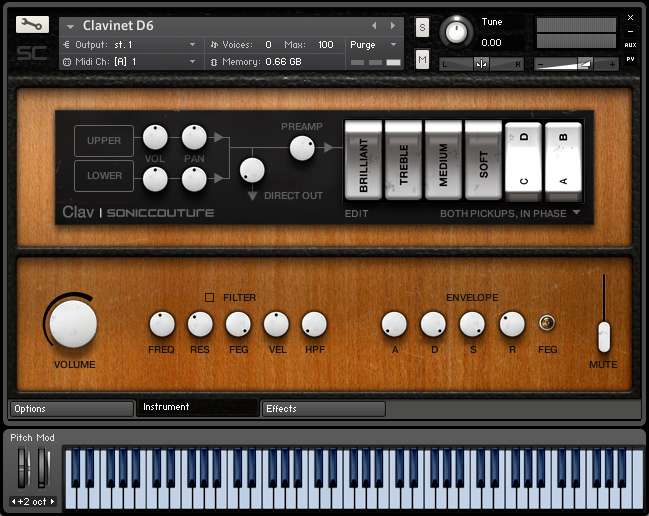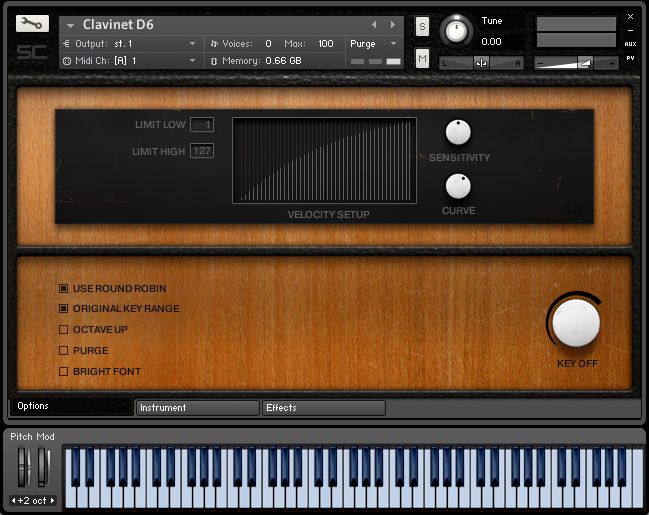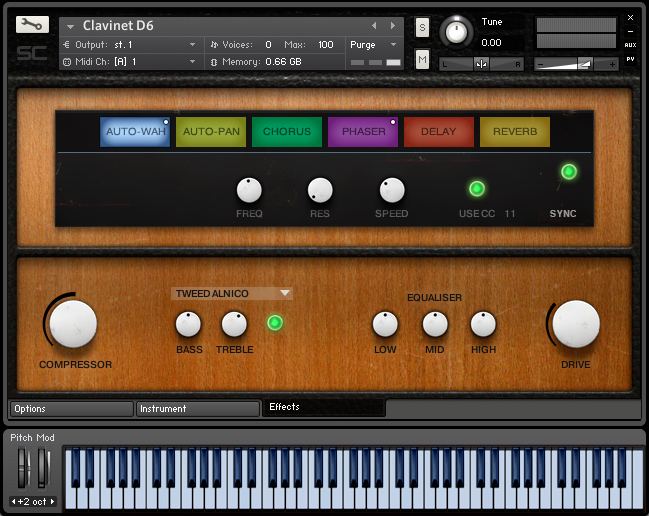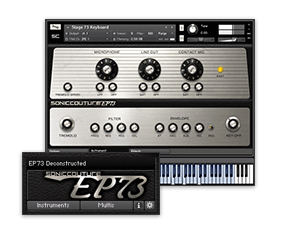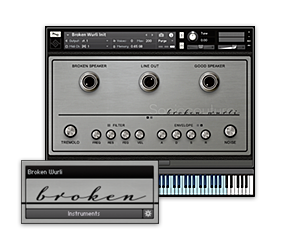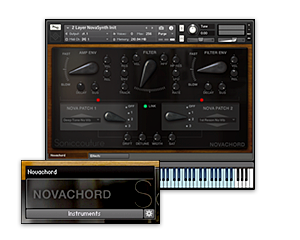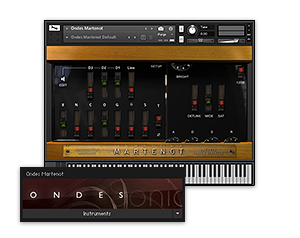CLAV
D6: A FUNK ICON
- 31 layers
- MODELLED PREAMPS
- 9GB Library
- Kontakt player NKS
MODIFIED FOR SAMPLING BY SONICCOUTURE

Hohner D6s are getting quite rare, because of their delicate, high-maintenance mechanical nature. Over a 12 month period we extensively restored and then modified our D6, which was a nice example in decent working order before we even started. But to get these instruments functioning absolutely perfectly is a real labour of love.
As well as wanting to get it sounding perfect, we also needed to make a few custom modifications. To model the internal setup of the instrument, we added a direct XLR output to record each pickup separately, and an input to the D6 preamp in order to capture the EQ response.
The switching added for this output can be seen in the pictures above.
THE KONTAKT INSTRUMENTS
SUPER-CLAV CONTROLS

Sampling each pickup separately and bypassing the preamp means that the architecture of the Soniccouture Clav is very creatively flexible. As well as routing both pickups into the preamp as on the traditional instrument, it is also possible to have a clean, direct output, and to vary the level and panning of each pickup independently. The traditional Clav rocker switches then control the phase of the pickups.
| Library Specs |
|---|
24 Bit 48khz mono sampling |
9.6GB core library ( 5 GB with NCW compression) |
14,880 samples |
31 Velocity layers w/Intelligent round robin, switchable |
Modelled impulse responses of Clavinet D6 preamp /filters |
Detailed user velocity setup |
articulations; straight, mute, release, and mute release |
Separation of pickups with independent volume and pan. |
Keys + Sound Design Presets |
Kontakt Player Compatible |

KONTAKT PLAYER COMPATIBLE
This is a Kontakt Player instrument. This means that you do not need to own the full version of NI Kontakt to use it. It will run as a plug-in instrument in any VST/AU/RTAS/AAX/WASAPI,compatible host program or DAW eg: Cubase, Logic, Ableton Live, DP, Reaper, Pro-Tools. No extra purchase necessary.
System Requirements:
Windows 7 or higher (latest Service Pack, 32/64 Bit), Intel Core Duo or AMD AthlonTM 64 X2, 4 GB RAM (6 GB RAM recommended)
Mac: OS X 10.9 or higher, Intel Core 2 Duo, 4 GB RAM
Requires KONTAKT 5 or KONTAKT 5 PLAYER version 5.5 or later
